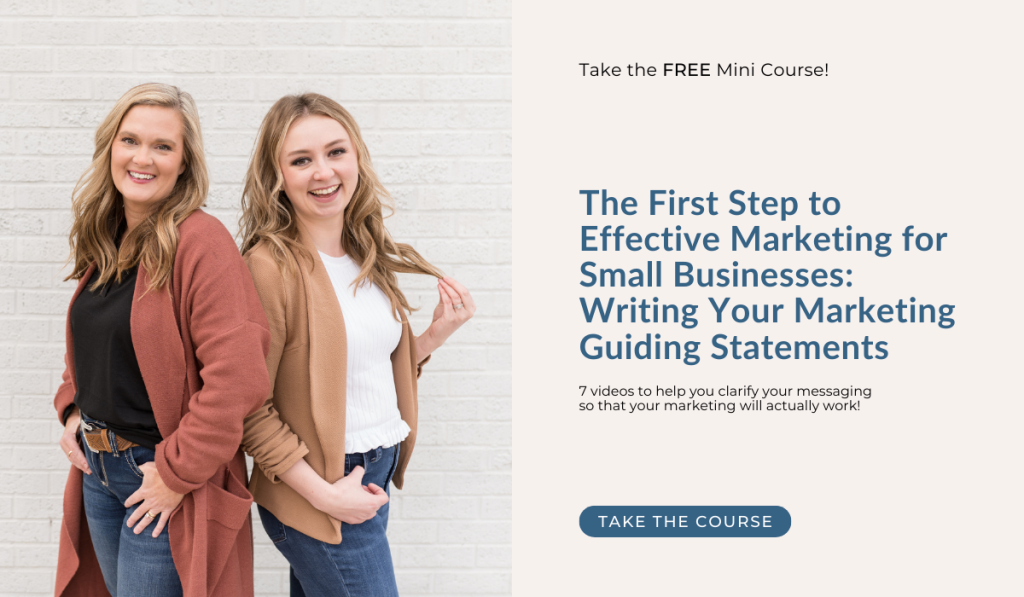Identifying your audience is the first step in a successful marketing plan. Learning more about your customers will help you better communicate with them and position your products or services as a solution to their problem.
Whether you’re a business owner or a marketing professional, you may not think you have the time to create an audience strategy. That’s why we’ve provided an easy, seven-step process to identify your best customers and clarify your message to them.
Read on to learn how to create a target audience strategy.
1. Learn who your best customers are.

Marketing to the masses isn’t as effective as targeting a specific group of people. We call that group your “best” customers: those who are most likely to do business with you to solve a problem they’re facing.
Learn as much as you can about your audience to craft a message they’ll find relevant to their everyday lives. A few things you’ll want to know about your best customers are:
- Their demographics (age, income, gender)
- Their psychographics (values, opinions, interests)
- Where they live (city, state, country)
- How they communicate (through Facebook, over the phone, in person)
2. Determine what they want to accomplish.

Once you’ve identified your target audience, you’re ready to learn what they want to achieve. Their end goals may include:
- Saving time and/or money
- Building a business
- Giving back to the community
- Protecting their family
- And more
When you’ve determined your audience’s main goal, you can state what they want right there in your marketing messages. Seeing the end goal helps your customer recognize (or remember) that they want to achieve what you’ve just mentioned.
3. Identify what problems may get in their way.

Your audience will face challenges while trying to reach their goal. Here are three things to consider when addressing their main problem:
- There’s a barrier between your customer and their goal. (For example: Lack of time and money could keep a client from marketing their business better.)
- That barrier is making your customer feel certain emotions. (They’re frustrated by that lack of time or money, and they’re tired of bad advice and ineffective strategy.)
- Your customer shouldn’t have to deal with the problem. (Business leaders shouldn’t have to wonder if they’re wasting time or money on marketing.)
Keep in mind: People make buying decisions (and address problems) first based on emotion, then back up those decisions with facts. Your customers want to get to the root cause of their frustration so they can solve their problem once and for all.
4. Understand how these problems make them feel.

In traditional marketing, business leaders created messages that positioned themselves as accomplished experts. But when you start your message with authority, your audience will experience a disconnect. People have valid emotions and frustrations behind their problems. And they want to hear about a solution to those problems, not another sales pitch.
As a business leader, you can’t just tell customers how great you are and expect them to buy your products or services. Instead, let your audience know that you understand their pain points, stressors, and emotions. By removing yourself as the focus, you’ll become a trustworthy guide and resource for your audience.
Empathizing with customers in your message may look like this:
- We realize the responsibility that comes with growing a company.
- When you start to dive into the details of marketing, it can feel overwhelming.
- Business leaders shouldn’t have to wonder if their marketing will actually generate sales.
5. Offer a clear solution to the customer’s problem.

Since you’ve expressed genuine empathy, now it’s time to show authority in your messaging. You can do this by using testimonials, statistics, industry awards, and logos of clients you’ve worked with. (For example, you might use a review from a happy customer who finally found a solution by choosing your company.) This will show your target audience that you know what you’re doing — and that your current customers agree!
While you’re establishing this authority, remember that customers don’t always buy the best products or services. They choose the products or services they can understand most easily. So just make sure you can answer their three questions in plain language:
- What do you offer? (Your products/services are a tangible solution.)
- How will it make my life better? (They’ll solve their problem and eliminate frustration.)
- What do I need to do to buy it? (We’ll cover this next!)
6. Outline the steps they must take to get the solution.

Once you’ve made it clear how you can help a customer address their problem, tell them what they have to do next. Describe the steps a customer needs to take to buy, as well as anything they have to do post-purchase. The three- or four-step process may look something like this:
- Schedule a consultation.
- Discuss your goals.
- Create an effective strategy.
You’ll want to lay out these steps for a couple of reasons. First, customers don’t take action unless someone challenges them to do so. Second, while those next steps may seem obvious to you, they might be unclear to someone who’s not a leader in your business. And because confused buyers don’t buy anything, clarify what they need to do so they can feel confident in their choice!
7. Describe the successful outcomes once they take those steps.

Finally, you’ll want to explain what life looks like before and after someone encounters your company. This may not be obvious to your audience, so show them how things will ultimately be better after working with you and finding a solution.
Here are examples of successful outcomes your customers may experience, depending on the products and services you offer:
- Achieving power, position, or status
- Eliminating anxiety or wasted time
- Making more money
- Improving their health
- Feeling inspired or part of something bigger
When you create an audience strategy, you’ll identify your best customers — and how your organization can help them. And realizing you’ve guided someone to a solution is way more satisfying than just closing a sale!
But while audience identification is essential to growing your business, it takes time. A small business marketing agency can help you create an effective strategy so you still have time to focus on leading your company.

Our proven marketing protocol helps companies make more money, free up time, and plan an effective strategy.
Treefrog Marketing is an agency in Lafayette, Indiana focused on small business. We specialize in strategic marketing and advertising, graphic design, web design, social media, SEO, and more. For more information, please visit our website. You can also connect with us on Twitter, Facebook, LinkedIn, and Instagram.




